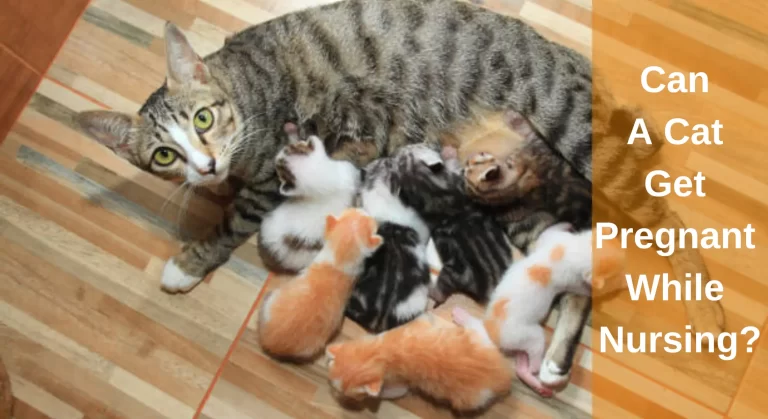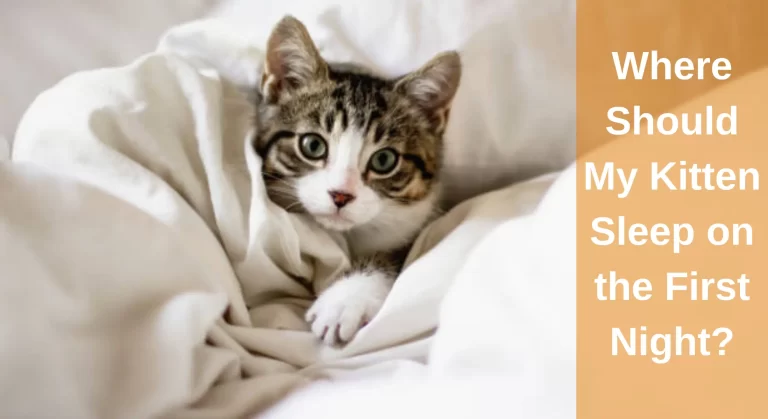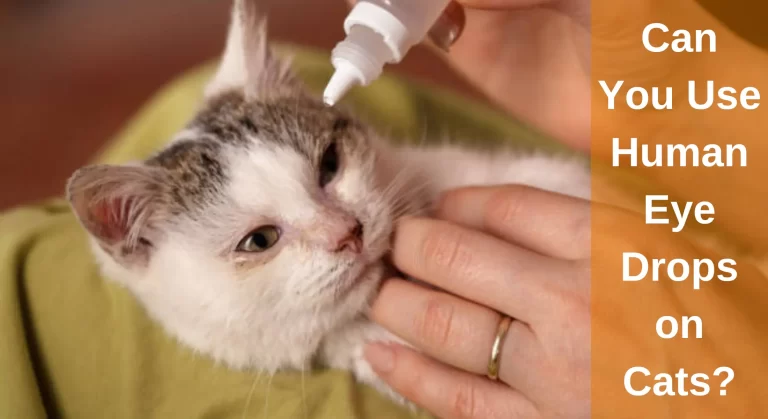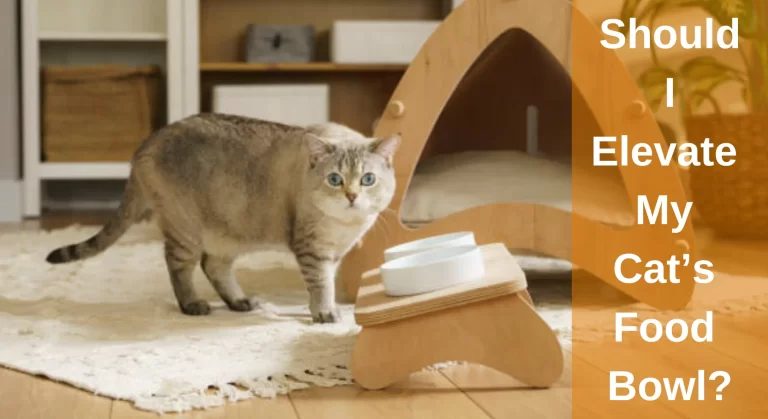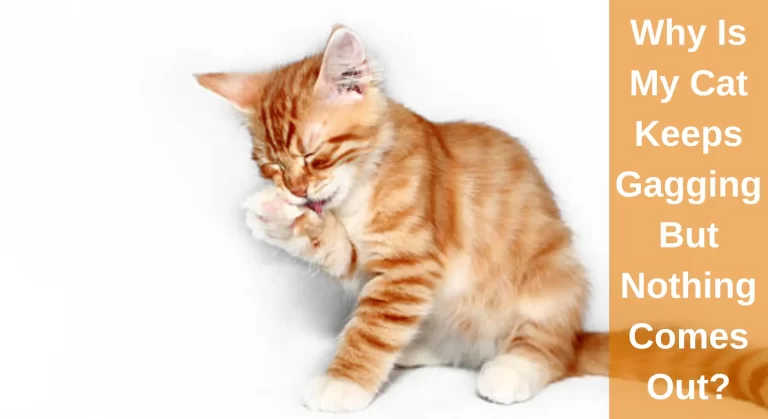Is Baking Soda Safe for Cats? Is Baking Soda Safe to Use Around Cats?
A fantastic all-purpose product that can be used in the home is baking soda. You may utilize it to scrub the bathroom or get rid of troublesome stains. Moreover, it’s not surprising that we considered its application to mask the kitty feces smell that penetrates the bathroom. But most concerning cat owners ask frequently is baking soda safe for cats.
Yes, you can use baking soda around cats or minimize the smell of their litter. But if your cat consumes a large amount (1-2 teaspoons) of baking soda, it may harm your cat. The largest danger is the increased salt concentration of baking soda, which in an emergency, results in life-threatening hyperkalemia. There are some safety measures you must take for the safety of your felines while using baking soda.
As cats aren’t miniature humans, they may be adversely affected by substances that are normally safe for people. In this article, we’ll examine the dangers of baking soda for felines, how much amount is dangerous, symptoms of baking soda toxicity, how to use it around your felines, and much more!

What Is Baking Soda?
Sodium bicarbonate is sometimes known as baking soda. It’s a chemical that isn’t toxic and includes salt. Although it is normally harmless for you to utilize in your household because if your feline consumes a lot of it, it could be deadly.
It is generally combined with water or an acidified substance, such as lime juice or honey, to act as an activating agent. Comparing it to baking powder, which just requires water to be active or utilized and already includes acid and baking soda. Baking soda is a widely used home item. Baking soda is frequently used to reduce or eliminate scents in the household.
Is Baking Soda Toxic to Cats? Is Baking Soda Safe for Cats?
Baking soda is not considered highly toxic to cats, but it can be potentially harmful if ingested in large quantities.
Normally regular home usage of baking soda poses little risk to your feline. If a cat consumes a spoonful of this powder, it could be toxic. This is rare because few felines will eat baking soda on its own because of its flavor.
If a feline consumes baking soda, a toxicity-related disease may develop because it disturbs the electrolyte balance of the body if consumed in high amounts. An excessive dose of this compound will cause the body to have too much salt and a shortfall in potassium. Clinical symptoms include nausea, vomiting, diarrhea, abdominal discomfort, fatigue, sluggishness, loss of coordination, convulsions, and an abundance of water in the body may appear in this situation.
If your feline consumes baking soda, you should immediately call pet poison control or transport him to the closest treatment center.
Check Out: Can You Give Cats Milk of Magnesia? Things You Need To Know
What Happens if a Cat Licks Baking Soda?
If your feline licks a little sodium bicarbonate, she won’t have any negative effects. However, it can damage your feline’s health if she consumes a significant amount. Baking soda toxicity varies to the amount that a feline consumes per pound of body weight. This is owing to the salty and bitter flavor of sodium bicarbonate.
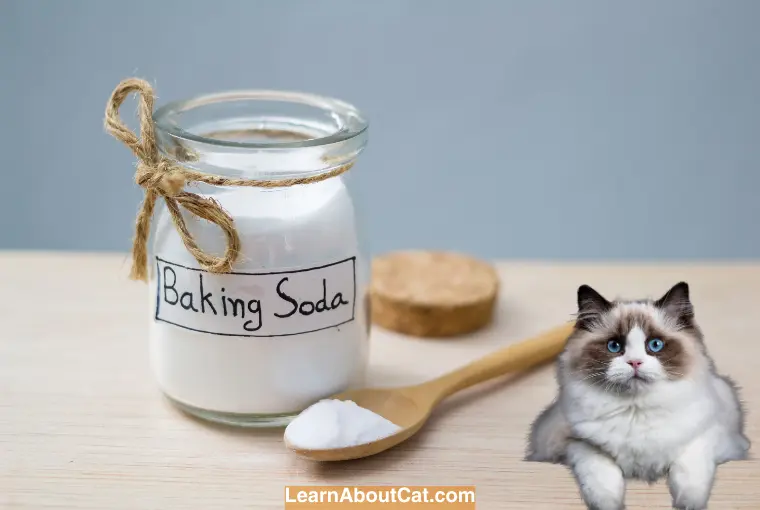
- Respiratory Irritation: Cats have a heightened sensitivity to airborne particles. Inhaling excessive amounts of baking soda can irritate the respiratory system, leading to coughing, sneezing, or difficulty breathing.
- Digestive Upset: Ingesting large amounts of baking soda can cause stomach upset, including diarrhea or vomiting. Cats are known for their grooming behavior, and if they lick or ingest baking soda from their paws or fur, it may lead to digestive issues.
The electrolytic balance of a feline will be disrupted if she consumes too much sodium bicarbonate. Due to the less calcium as well as potassium ratios and the higher salt concentrations. Felines may get baking soda hypersensitivity which occurs due to electrolyte abnormalities in the body after consuming high levels of baking soda.
How Much is Too Much?
If your feline consumes baking soda around 5 to 10 grams or 1-2 tsp per kilogram of body weight, it can be extremely harmful to them. If your feline accidentally ingests little baking soda when you’re cleaning her teeth, it’s nothing to worry about.
To trigger a life-threatening condition, roughly a whole measuring cup will be required. It’s rare that your cat will consume lethal quantities of baking soda because it doesn’t taste good and have a powdery texture.
Interesting Reading: Litter Deodorizer vs Baking Soda: Which is Best for My Cat and Me
Signs and Symptoms of Baking Soda Toxicity
The signs of baking soda hypersensitivity in felines are related to abnormal electrolytic levels, thus your cat’s illnesses will depend on which organ of their body is impacted by the abnormal electrolyte imbalance. Here is the list of the different signs your feline may exhibit if he gets baking soda toxicity:
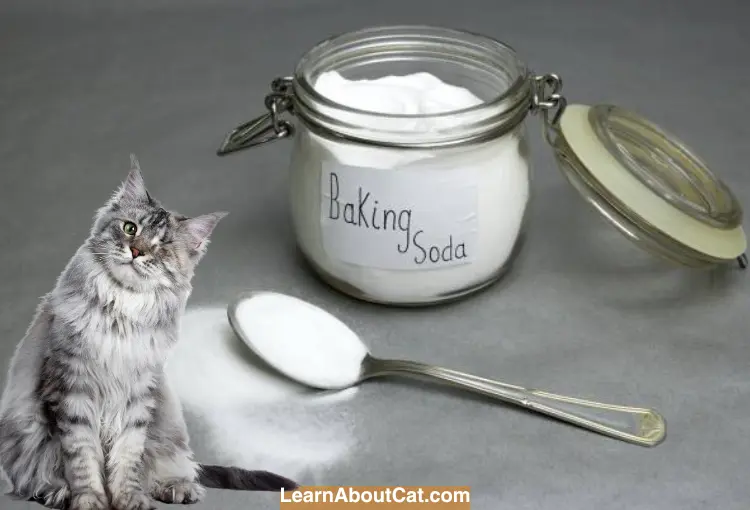
- Nausea
- Dysentery
- Anxiety
- Lack of energy
- Spasms
- Convulsions
- Depression
- Breathlessness Hallucinations
- Abnormalities in heart rate
- Weakened muscles, epilepsy
- Changes in urine color
- Anemia and extreme thirst
- Disorientation
Contact your veterinarian as quickly as you can for an examination if you see any of these signs.
What to Do If Your Cat Eats Baking Soda?
If you discover your cat with her face in the sodium bicarbonate container and you believe she may have consumed too much, call your veterinarian right once. Immediately check her salt, potassium, or calcium concentrations and, if required, provide an IV for maintaining her body’s water level.
If you’re unsure whether your feline consumed enough baking soda to be hazardous, continue to look out for symptoms like droopy eyes, excessive thirst, tiredness, reduced skin flexibility, muscle aches, and confusion.
If your feline has just consumed a small amount, it won’t feel any harmful consequences, but diarrhea or nausea could still happen; keep an eye on your pet and make sure they have access to sufficient water. You don’t have to sit quietly unless your feline exhibits toxicology symptoms before you ask for help. The earlier you resolve minor health issues, the better.
Common Uses of Baking Soda Safe for Cats?
There are numerous methods to utilize baking soda safely around your feline while preventing it from consuming large amounts that might be poisonous for her. Let’s examine ways to utilize this versatile product throughout your home effectively.
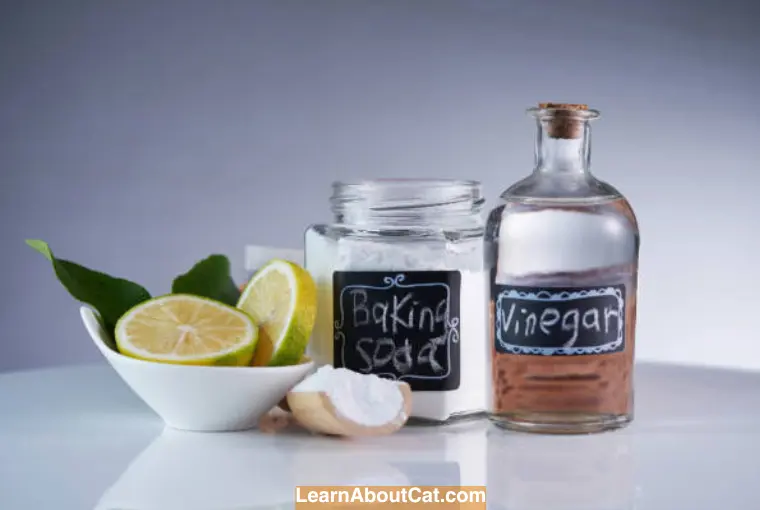
1. Cleaning the Litter Tray
Baking soda is frequently employed to manage odor in a cat litter tray since it’s a powerful odor remover. To the tray, add a couple of tbsp of sodium bicarbonate. You can either place it into the base of the litter tray before putting litter or you may sprinkle it throughout the litter so that when your feline utilizes the litter tray, it will gradually combine. Baking soda frequently serves as one of the constituents for most professional litter manufacturers.
2. Cleaning up Injuries
Your feline may experience injuries and may tend to pee or defecate on the ground or your carpeting when she’s still understanding about using the litter tray. To disinfect it, make a paste by combining equal parts of baking soda and vinegar, after which put it to the stained furnishings or carpeting. After a short while, wipe it down with a napkin.
3. Addressing Nail Issues
Baking soda is a great way to prevent bleeding if you accidentally bit your cat’s claws while clipping them. Add pressure after dipping the damaged nail in the baking soda solution.
4. Getting Rid of Cats’ Bed Smells
It can be used to retain the scent of freshness in your feline’s bed. Sprinkle some baking soda on top, then wait 20 to 30 minutes. After that, carefully clean the bed with your vacuum pump. If your feline’s bedding is washable, you may also put half a cup of sodium bicarbonate in the washing machine to help with odor removal.
5. Treating Wasp Stings
Although it is rare, your cat can get stung by a bee, particularly during the springtime. Extract the sting and apply sodium bicarbonate solution to the infected area to cure it. This promotes healing in the inflamed area.
6. To Get Rid of the Skunk Odor
Cats kept as pets can occasionally be daring. They might stray outdoors in your house, which could lead to experiences with skunks. If your pet ever has the misfortune of being splashed by a skunk, you may quickly get rid of the foul scent by following these instructions.
Apply the solution to your cat for a couple of minutes, then rinse well. For making a solution, mix 1 tsp of handwash, one-quarter cup of sodium bicarbonate, and 1/3 cup of 3% hydrogen peroxide. Don’t let your cat’s eyes come in contact with any of the mixes. After applying this solution, shampoo your felines‘ fur and rinse once more.
Can You Use Baking Soda Directly on Your Cat for Flea Control?
No, it’s not advised to apply baking soda straight on your feline to get rid of fleas. Baking soda aid in deodorization and moisture absorption but is ineffective in controlling fleas in pets. However, direct application of baking soda to your feline’s coat may aggravate their flea issue by causing skin damage, drying, and irritation.
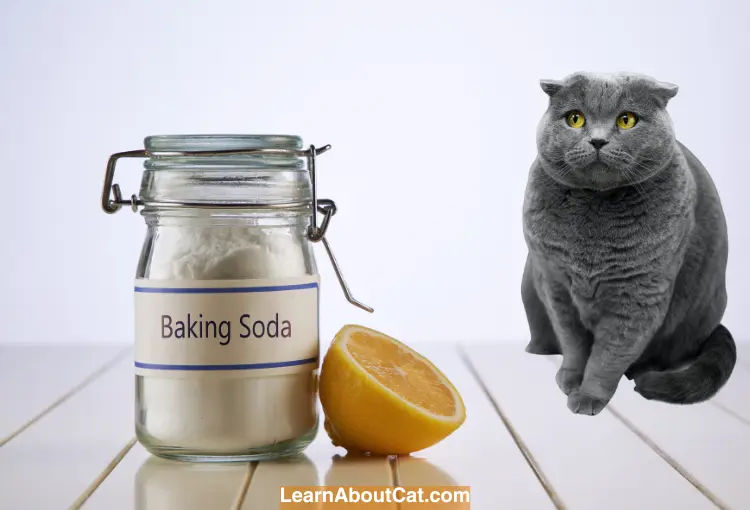
It is advised to mix baking soda in water to get rid of fleas. It functions by drying up fleas, including their larvae and eggs. But still, there are many chances that your feline may ingest it.
Moreover, there are a variety of safe and efficient flea management techniques, such as flea bands, spot-on remedies, oral drugs, and flea shampoos. The best method to use for your feline’s flea management must be decided in consultation with your vet.
Also Read: Best Flea Treatment for Kittens Under 12 Weeks
Can You Use Baking Soda in Your Home for Flea Control?
Yes, flea elimination in your house can be achieved naturally and safely using baking soda. You can follow these steps to get rid of fleas from your home:
- Carefully vacuum your carpeting and furnishings.
- On the carpet, upholstered furniture, and other places where fleas might be found, thoroughly scatter baking soda.
- To give the sodium bicarbonate a chance to soak up moisture and smells, leave it for several hours or even an entire night.
- To avoid any fleas returning to your house, completely vacuum the sodium bicarbonate and make sure to empty the container or throw the vacuum pouch outside after use.
Also, Check Out: My Cat Has Worms How Do I Clean My House? [A Complete Guide]
Frequently Asked Questions
Do cats like the smell of baking soda?
Due to their excellent smelling sense, cats can quickly smell the potent smell of substances, such as the aroma of baking soda. Some felines may like the smell of baking soda while other cats may become irritated or find it unpleasant.
Do cats like the taste of baking soda?
Most cats do not find the taste of baking soda appealing. Baking soda has a bitter taste, and most cats are unlikely to willingly consume it. However, cats’ taste preferences can vary, and some may be curious enough to lick or taste baking soda if given the opportunity.
Can cats eat a little baking soda?
No, it’s not recommended for felines to eat baking soda. However, if they accidentally lick a little amount of it, they may experience digestive issues such as nausea or dysentery. So, it’s important that you must keep baking powder out of the reach of your felines.
Is baking soda safe for cats’ litter boxes?
Baking soda can be used in a cat’s litter box to help control odors. However, it should be used sparingly and mixed well with the litter to minimize the chances of your cat ingesting it. Direct ingestion of baking soda can be harmful to cats. It’s important to prioritize your cat’s safety and well-being when using baking soda in the litter box.
Can I sprinkle baking soda on my cat?
No, you can’t directly apply baking soda to your feline’s coat. Alkaline substances like baking soda can aggravate a feline’s skin and result in irritation, inflammation, and irritation. Moreover, if during sprinkling felines ingest it, they may experience digestive issues.
Does baking soda absorb pet odors?
Yes, baking soda may assist to eliminate pet odors in your house as it is a homemade and effective odor absorbent. It helps to make your house environment tidy and comfortable for family members and your pets by sucking in and removing odor particles.
Final Verdict
Although baking soda is a chemical with many uses, including culinary, cleansing, and other things, you must still take precautions whenever you use it near your cat. Although baking soda isn’t harmful, giving your cat beyond a tsp or 2 can be potentially lethal. This is particularly applicable to smaller felines because their hazardous dose requirements are lower.
Although you mustn’t use baking soda to remove fleas from felines’ bodies or to brush their teeth, there are many households uses for it. It works well to eliminate pet scents from carpeting, pet bedding, and other surfaces. Also, your feline’s teeth can benefit from using them for cleaning!
It may lessen litter tray odors and is safer than risky alternatives like applying aromatic oils, still isn’t the best decision for your cat.
Who is Isabella?
My name is Isabella, and I am a dedicated and knowledgeable cat enthusiast. With years of experience caring for cats and a deep love for felines, I made a mission to help other cat lovers navigate the challenges of cat ownership.

